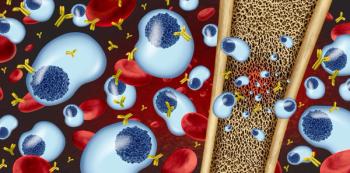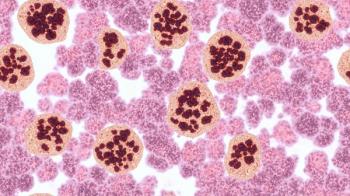
Superbug Reports Spotlight Antimicrobial Stewardship
Recent superbug exposure reported at a hospital in Los Angeles has shed light on the importance of antimicrobial stewardship.
Recent superbug exposure reported at a hospital in Los Angeles has shed light on the importance of antimicrobial stewardship, J. Russell May, PharmD, FASHP, a clinical professor at the University of Georgia College of Pharmacy, told Pharmacy Times in an exclusive interview.
“This is 1 of the things that happens when you use super broad-spectrum antibiotics, like carbapenem,” Dr. May said, describing carbapenem as “one of the big guns” used as a last resort for many infections. “You’re creating the opportunity for bacteria to develop some sort of resistance—in this case, developing an enzyme that renders carbapenem inactive.”
Nearly 180 patients at the Ronald Reagan UCLA Medical Center
The medical center maintains that it followed national guidelines and manufacturers’ guidelines for sterilization, but 2 of the hospital’s 7 Olympus Medical Systems Group’s scopes may have transmitted CRE.
CRE is particularly dangerous because it has developed resistance to the routine antibiotics that are available, so there are a limited number of treatment options available if an individual develops an infection with this organism.
“That’s scary because if it’s resistant to everything, what do we do?” Dr. May told Pharmacy Times. “I think that’s a fear that we’ve had for many years, and why antimicrobial stewardship became such a popular topic. We’ve got to use the antimicrobials that we have correctly or we’re going to create all these superbugs that are resistant to all the antibiotics we use.”
UCLA’s superbug generated a lot of press about CRE and the scopes that may have spread the infection. However, Dr. May said that kind of press is a double-edged sword.
On the one hand, it is important to report on how superbugs are spread so that future incidents can be prevented. On the other hand, this kind of information may create a sense of fear surrounding the routine endoscopic procedures in which scopes are used.
At UCLA, the scopes were used to diagnose diseases of the liver, bile ducts, and pancreas in procedures that could be potentially lifesaving.
Dr. May said there is no question that hospitals will see an increase in organisms like CRE. Superbugs will thrive if broad-spectrum antibiotics continue to be used, he cautioned.
Another issue is the lack of incentive for pharmaceutical companies to develop new antibiotics. Currently, there are a fairly
“Drug companies are kind of in a bind because obviously they’re in the business to make money, and the antibiotic field is not a super-profitable field,” he told Pharmacy Times.
Dr. May said he hoped pharmaceutical companies are encouraged to develop more antibiotics, especially because as new ones become available, there will be new resistance and a need for more.
“What we can do is slow the process of development of resistance down by using antimicrobials appropriately,” he said.
According to Dr. May, 3 ways to slow down resistance include transitioning from broader-spectrum antibiotics to more narrow-spectrum ones, limiting lengths of therapy, and using proper handwashing techniques.
Pharmacists specifically
Another way pharmacists can help is by educating patients about how bacteria are spread. For example, pharmacists can tell patients that they should be on the lookout for handwashing when a health care provider enters and leaves a room.
Pharmacists can also inform patients who are prescribed antibiotics to never share them with other patients, take them for the proper length of time, and take all of them so they do not have a partially treated infection.
“The concept of antimicrobial stewardship is spreading fairly quickly,” Dr. May told Pharmacy Times. “I think people are recognizing the importance of that and the importance of having a pharmacist very active in that antimicrobial stewardship team in hospitals.”
Newsletter
Stay informed on drug updates, treatment guidelines, and pharmacy practice trends—subscribe to Pharmacy Times for weekly clinical insights.



















































































































































































































